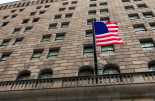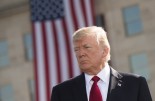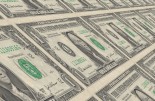T. Rowe Price: February 2023 FOMC Meeting Preview

By Blerina Uruci, Chief US Economist at T. Rowe Price
The Fed will announce its monetary policy decision this Wednesday. Here are my four expectations:
1) A slowing in the pace of hiking to 25bp (from 50bp in December)
2) A repeat of the December dot plot message: Federal Funds Rate (“FFR”) peaks slightly above 5% and no cuts this year
3) Powell will mention the recent slowing in inflation more explicitly than in December, but he will also emphasize the need for slower inflation to be sustained over a longer period.
4) Continue with a more broadly based reaction function: labour market tightness, inflation, and growth (2022 was just about high inflation). This will lay the foundation for a dovish pivot later in the year if the data plays out as I expect.
Points one, two and three are consistent with a very hawkish tone during the last FOMC press conference. However, without data to back his rhetoric, I expect Powell’s tone to be challenged by the market. The first step to believing Powell’s hawkish message would be to start pricing the terminal rate in the December Statement of Economic Projections (“SEP”), which is yet to happen.
What I expect in 2023
Terminal rate at 5% with risk to a small overshoot, and 75bp of cuts in Q4 when the economy slides into a recession.
How does 2023 differ from 2022?
Interest rates are now restrictive, and the bulk of the tightening has been done even if we are not at the terminal rate yet. Demand for labour is slowing (but the labour market remains tight), inflation appears to have peaked and surveys suggest a significant deceleration in growth as 2023 progresses.
The FOMC is acting as a risk manager; they cannot declare victory on inflation given their “transitory inflation” call went so wrong in 2021. In addition, the level of inflation matters for their communication in the near term. But the speed of deceleration in inflation will matter for their eventual pivot. The 3-month seasonally adjusted annual rate (“SAAR”) for both core Consumer Price Index (“CPI”) and Personal Consumption Expenditures (“PCE”) is slowing steadily, although PCE services excluding shelter seems stuck around 4%. I still think that it will become possible for the Fed to pause hiking soon and allow monetary policy lags to better feed through to the real economy.
Key views on the US economy for 2023
In my view, the Federal Reserve increases interest rates to at least 5%. The most likely path is 25bp in February, 25bp in March with risks to another 25bp hike in May if the data allows.
A re-acceleration of inflation and convincing evidence that rule out a recession will be necessary to price terminal rate of 6% or higher.
Growth
A US recession is not imminent, but the economy should slide into a recession by the second half (“H2”) of 2023. The Unemployment Rate (“UR”) breaks the Sahm Rule by Q4 2023. The Sahm Rule = Every time the US unemployment rate has increased by at least 0.5 percentage points, the economy has entered a recession. The recession is caused by significant tightening in monetary policy and slowing in consumer spending as aggregate incomes decelerate. A compression in profit margins will likely cause firms to start cutting costs including lowering headcount, leading to a slowing in the labour market.
Inflation
Core PCE falls to 2.8% year-on-year (“y/y”) by December 2023 (3-month SAAR is 2.2%). In the near term, inflation is driven by core goods due to slowing demand, improving supply chains and lagged effect of USD appreciation in 2022 (this is a small effect). Rent inflation comes down by the summer in line with the lag from private sector measures of rent. The sticky component of core services excluding rent decelerates more meaningfully toward the end of
2023 in line with the recession timing.








